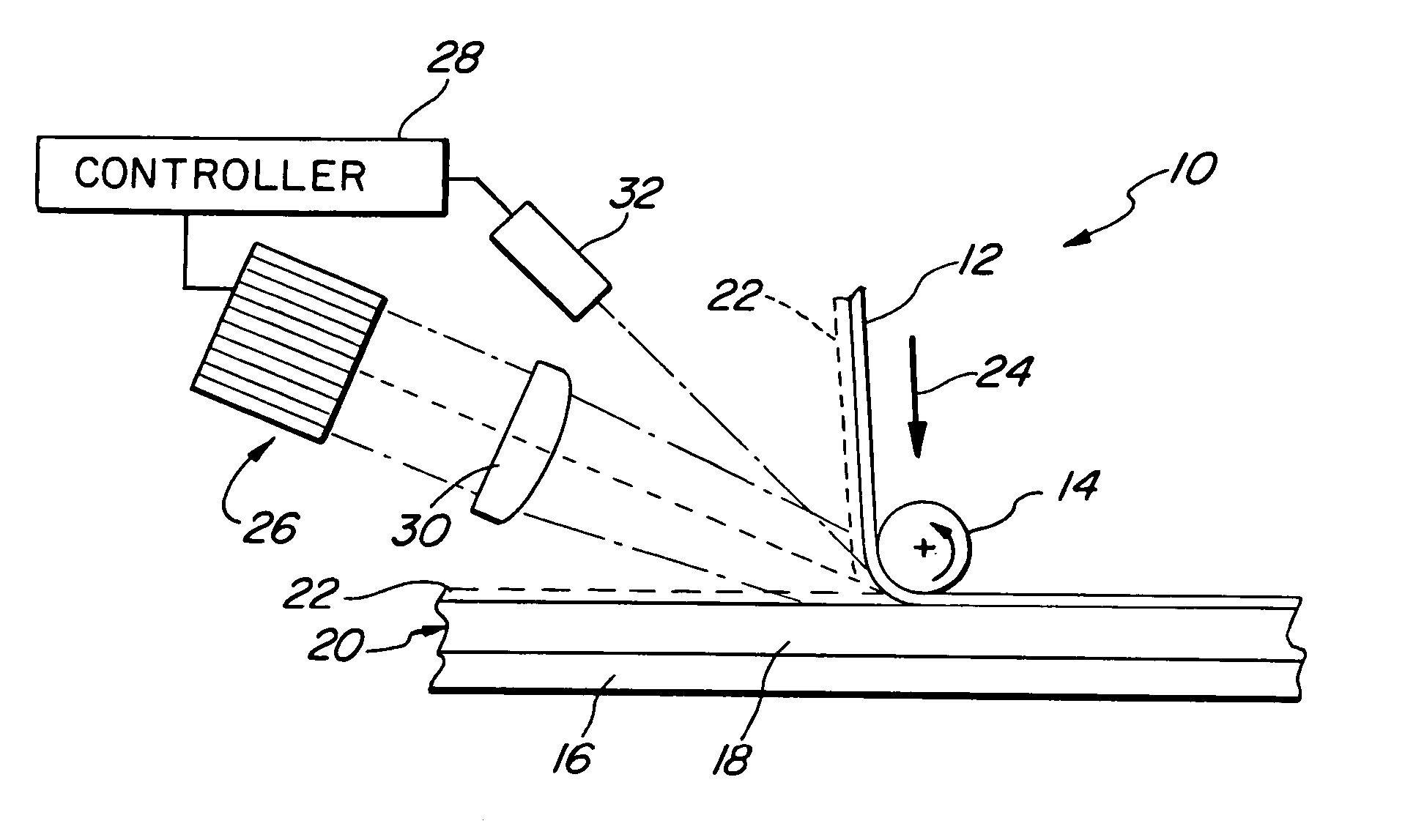Laser-assisted placement of veiled composite material
a technology of veiled composite materials and lasers, which is applied in the direction of lamination, ancillary operations, chemical instruments and processes, etc., can solve the problems of non-uniform placement of fibers in composite materials, 100% of the resin veil being heated and subsequently melted, and insufficient precision of the resin veil to the tows to properly tack the thermoplastic resin veil
- Summary
- Abstract
- Description
- Claims
- Application Information
AI Technical Summary
Benefits of technology
Problems solved by technology
Method used
Image
Examples
Embodiment Construction
[0013] The following description is provided to enable any person skilled in the art to make and use the invention and sets forth the best modes contemplated by the inventors of carrying out their invention. Various modifications, however, will remain readily apparent to those skilled in the art, since the generic principles of the present invention have been defined herein specifically to describe an improved method of automated fabrication of preform structures from composite materials utilizing a permeable spider-web-like resin veil of thermoplastic material to hold together fiber tape or tows, such as carbon-fiber tows. The resin veil is formed as an interlayer made of spunbonded, spunlaced or mesh fabric thermoplastic fibers and is discretely heated at selected points by pulsed laser radiation from one or more lasers. The lasers are preferably diode lasers supported in one or more arrays, in any desired configuration and manner, for example in a head on an automated tape placem...
PUM
| Property | Measurement | Unit |
|---|---|---|
| areas | aaaaa | aaaaa |
| area | aaaaa | aaaaa |
| size | aaaaa | aaaaa |
Abstract
Description
Claims
Application Information
 Login to View More
Login to View More - R&D
- Intellectual Property
- Life Sciences
- Materials
- Tech Scout
- Unparalleled Data Quality
- Higher Quality Content
- 60% Fewer Hallucinations
Browse by: Latest US Patents, China's latest patents, Technical Efficacy Thesaurus, Application Domain, Technology Topic, Popular Technical Reports.
© 2025 PatSnap. All rights reserved.Legal|Privacy policy|Modern Slavery Act Transparency Statement|Sitemap|About US| Contact US: help@patsnap.com


